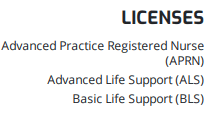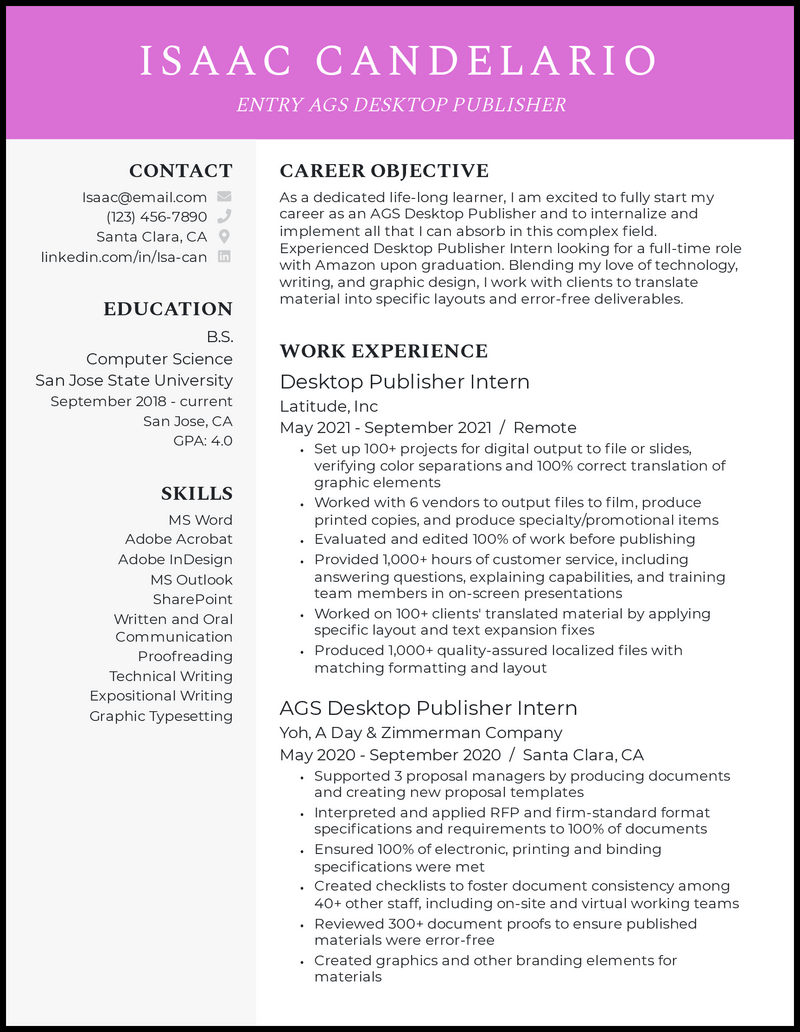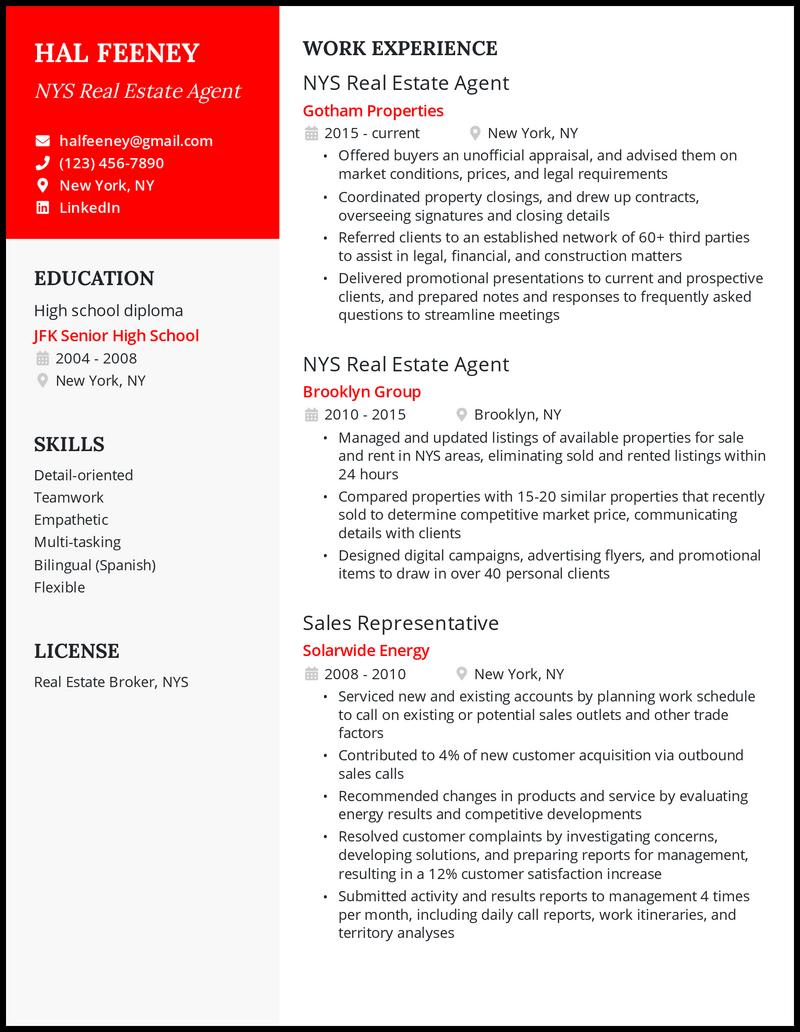You have all of the necessary job skills and experience, along with some additional qualifications that any employer would love to have at their disposal. So, why aren’t you getting the job or even a call for an interview? The problem most likely lies with your resume.
A resume check doesn’t have to be a painful task, so there’s no reason to put it off any longer. We’ve compiled 27 quick and easy resume changes, so your document will become a big win that will put you ahead of the average job candidate. Enlisting these resume tips will place you front and center in the eyes of recruiters.
Your Resume Makes the First Impression
Recruiters are busy, so it’s up to you to highlight your accomplishments to make their job easier. Because your resume provides information that will determine if an employer wants to know more about you, you must make a good first impression.
You also want to ensure your document shows how you stand out from other candidates to avoid being tossed aside like yesterday’s news without being given a second glance.
1. Maximize your contact header
Position your contact information at the top of the page with your name prominently displayed. Follow this with the job title, phone number, and email.
Optionally, you may include your city/state or social media links. Ensure that your email sounds professional, not cute or clever, to avoid winding up in the “banish-me-now” bin.

2. Skip the profile pic
Unless required, it’s best to leave the headshot to aspiring models. Photos take up space and prevent your resume from passing through ATS [1].
Unfortunately, some potential employers fear that a picture could lead to potential discrimination claims if they don’t hire you, so they might dump these documents before reading further.
3. Your resume isn’t a history lesson
As your resume is meant to be a brief snapshot showing how you’ll be a good fit for a position, keep it to a single page. Recruiters don’t have the time to skim through tons of information when they’re looking for specific matches, so only list what’s relevant [2]. Save the storytelling details for creating a cover letter.
4. Put your best foot forward
Because recruiters often have hundreds of resumes to go through for a single position, they’re going to skim the top third of your resume before deciding if they’ll continue reading. Make sure you hook them in by first putting the most important and pertinent information.
If you’re using an objective/summary, sell yourself by showing how your skills and experience set you apart from other candidates. Under your most recent employment, list qualifying accomplishments related to the position you seek [3].
Resume Formatting 101
Don’t confuse format with the template or outline. A resume template is a tool that allows you to input information to create your document in a pre-set arrangement, and a resume outline is a starting point that lets you get all your thoughts down in a semi-organized fashion.
Alternatively, the format is how you choose to display your data. Resume formatting can make the difference in whether you elicit a polished versus an unprofessional impression, so consider this factor to be just as important as the details you decide to include within the document.
5. Reverse-chronological format is your best friend
No matter the work experience you have, reverse-chronological is the preferred format. It passes more readily through ATS than others and allows recruiters to find what they’re looking for more easily.
It’s your best chance of hooking the hiring manager to read more about how you’re the best fit for the job because they’ll first see your most recent, relevant experience.
6. Choose a resume template appropriate for your field
With Google Docs resume templates, Word resume templates, and more available online, choosing which one will be best for your situation can be difficult. The appearance of the template you select may not seem like a big deal to you, but to recruiters, it offers a glimpse into your work persona.
For example, you wouldn’t want to choose a modern or creative template if you’re applying for an accounting position. Instead, choose a professional or official style. However, if you’re applying for a job that embraces imagination, such as graphic designer, a creative template could fit the bill.
Toss the guesswork aside! Click on the sample below to build your expert resume right away with our easy, adaptable templates.
7. Don’t get too cute
While your resume should show your unique style, don’t go overboard. Too much color, fancy fonts, graphics, and icons distract the reader if your document even passes through ATS. Rather, limit yourself to a single color in limited areas, such as job titles.
Select a professional font for readability, such as Times New Roman or Tahoma. Use basic bullet points and avoid graphics. Although you want to stand apart from the competition, do it with your words.
8. Remember the ATS
An applicant tracking system, ATS, scans your resume for the appropriate keywords and phrases. This tool is great for potential employers in narrowing down candidates, but it can be a nightmare for applicants.
Using these resume tips will help you pass through ATS so that your resume can reach human eyes.
Resume Content Is King
What’s most important to recruiters is what you write in your resume and how you express yourself. Don’t get distracted from your main focus by fiddling around too much with your formatting.
Get to the point with meaningful content that will hook recruiters into wanting to skim through your entire document rather than chuck it in the circular file after reading the objective. The clearer and more relevant your content, the more likely it will be for hiring managers to give you their time.
9. Skip the objective and summary in most cases
A resume objective is typically placed at the top of your document below your contact information. Generally, an objective will let recruiters know of your career intentions, while a resume summary will give an overview of how your experience relates to the position.
In all reality, this section can become a deal-breaker before the hiring manager even moves on to your employment history if it’s generic, so it’s best not to waste your limited seconds of the recruiter’s time and get straight to the point.
However, if you’re new to the employment market or changing fields, an objective or summary can tie in your experience with the new position. Just make sure the information is clear and succinctly sums up your intent.

10. Demonstrate your impact
When listing bullet points beneath each job you’ve held, don’t simply regurgitate your job duties. Recruiters already know this information, especially if you’re applying for a similar position. It makes it look like you just tossed in filler and don’t want the job.
To truly be noticed, provide content that highlights your accomplishments. After all, you want to get hired, don’t you?
Here are a few ways you can take your resume up a notch:
- Use numbers. Quantifying your information gives recruiters proof of what you’ve accomplished. Numbers don’t lie, so use them to your advantage.
- Don’t forget to include dollars and percentages to prove your impact. Numbers can be used with people supervised or collaborated with, money saved, profits, or statistics.
- Never underestimate the power of numbers.
- Focus on achievements. How did you benefit your past employers? Avoid stating what you did, but use your bullet points to emphasize achievements and accomplishments.
- Again, job duties are similar across many fields and are expected. However, you want to be seen as a valuable asset and not just another employee.
- Show off your expertise to grab the hiring manager’s attention and make them want more.
- Show your skills in action. Although you’ll list skills in another section on your resume, prove that you have them.
- Show recruiters that you’re not just listing what you think they want to read.
- Using action verbs, include examples of hard and soft skills when writing achievements in your bullet points for the most impact [4].
11. Choose skills selectively
Because you’ll want to limit your skills to between 6 and 10, be wise with those you choose to list in your skills section. The majority should be hard skills, and those should be listed first.
Include both hard skills, those that show your know-how, and soft skills, the ones that you’ve developed throughout your life.
Check the job posting and description when narrowing down your possibilities to only include those most relevant to the position.

12. De-emphasize education
Your relevant job experience should be the focus of your resume. Include your education near the bottom of the document, but avoid using too much space. All that’s required is the school, city and state, and your degree.
You can include the year you finished your degree, but it’s unnecessary. While you may want to list honors if you graduated cum laude, there’s no need to add your GPA, awards, or extracurricular activities—though you may wish to do so if you lack job experience.
13. Keywords matter
When writing your objective/summary, job description bullet points, and skills sections, be sure to use keywords and phrases. You can find these in the job posting or job description.
Include industry jargon where appropriate. As ATS rates your resume, you’ll get more points when these match up. Also, recruiters actively skim for these terms when picking candidates for interviews.
The Extra Resume Additions
Depending on your career field, level of experience, and job requirements, you may want to add extra information to your resume.
Additionally, if you have some extra space to fill, additions like a link to your professional website, or relevant activities you’ve been involved in, can provide the recruiter with more information to determine if you’re a great fit for the job.
14. What about hobbies and interests?
When considering adding a section for hobbies and interests, think about the company for which you want to work. A traditional, more established company may not care, but modern entities may be interested in a prospective cultural fit.
Choose only those activities that help you stand out from other applicants, and avoid potentially controversial topics unless you know they align with the company’s values.
For example, applying for an accounting position and playing a musical instrument shows dedication to precision and quality output. Volunteering in a soup kitchen can be related to a human resources position because it shows your empathy and ability to work with people of different backgrounds.
15. Leverage projects and volunteer experience
Speaking of volunteer work, these activities can be useful as unpaid job experience. This can be especially helpful to include if you’re new to the job market, a student, or a recent graduate.
Volunteer experience can also fill in employment gaps or provide more information if you’re changing careers. Charitable volunteer work can give you a plus one in the eyes of recruiters as long as you can relate your achievements to the position.
Some excellent examples to include would be volunteering at a shelter, unpaid work in a professional or medical capacity, or any place where you were involved in mentoring.

16. Stay on top of certifications and licenses
Depending on the state in which you live, you might be required to have a license to work in certain positions, such as security guard, travel agent, or electrician. Certification may also give you a one-up for computer software or human resources jobs.
Keep your credentials current, including any continuing education. Consider the fees as an investment in your future.

17. Forget about your reference list
Don’t list your references on your resume, and skip the phrase “references available upon request.” This information should be kept in a separate document, ready to be provided when asked.
However, you want to avoid being labeled as Captain Obvious, so save that space for something important.
Hope You Paid Attention in English Class
While content is king, how you express yourself is what makes or breaks that content. If the recruiter finds language, grammar, or spelling issues, it’s a sure bet that your resume won’t be given a second glance.
Proofread your document, then proofread it again. Have a friend or colleague proofread it as well. If you can’t get your resume right, the document that shows the best version of you, how will the recruiter be able to find you competent enough to perform the required job duties?
Begin your resume design on the right foot with one of our customizable resume templates. Click the resume below to get started now!
18. Activate your language
Avoid passive voice. Instead, use active voice and seek out relevant action verbs to create your resume.
Our resume checker will point out any instances of passive voice and weak verbs, helping you delineate your accomplishments in your job description points. Additionally, ATS likes action verbs since many programmed keywords will be in this form.
19. Avoid fluff and stuff
Avoiding unnecessary terms can improve the quality of your resume. Hiring managers want you to get to the point and don’t want to sift through irrelevant fluff.
In addition, the only place you should use personal pronouns is in an objective or summary if included. Don’t be the weirdo who refers to yourself in the third person [5].
20. Check for consistency
Consistency brings your entire resume together and exudes an air of professionalism. Keep your punctuation the same within each section and from one to the next. Use the same number of bullet points under each job, if possible.
Starting each accomplishment with an action verb, use the same tense throughout your document. There’s one exception: You can use either present or past tense with your current employment; then, use past tense for previous jobs.
These small things add up, so take advantage of our free resume checker to ensure you maintain consistency in your resume.
21. Don’t muddle through on your own
Don’t be afraid to ask for feedback when having someone else proofread your document. A fresh perspective will ensure you’re giving the desired impression.
Refer to your nerdy grammar friend, or turn to an outside source as well. Our resume checker and resume maker will provide you with AI-powered tips on how to improve your document to make the grade with all of the information we’ve provided.
You’re Almost Ready to Send Your Resume into the World
Although there’s quite a bit of excitement once you’ve completed the perfect resume, try to rein yourself in a bit longer. Rather than rush to hit the send button, there are a few more things you need to do for both yourself and potential recruiters.
22. Customize your resume for each job
To be honest, the resume you just created will only be sent to one potential employer. While much of your information will stay the same throughout your job search, you’ll need to tailor some of it to each job for which you apply.
If included, changes will be made to the objective/summary, job experience bullet points, skills, and hobbies/interests sections. Every employer will have very specific requirements for a job position, so you’ll need to make sure your information matches for each resume you send out using the precise keywords and phrases listed in the postings.
23. Name your resume wisely
Because you’ll want to review this document before an interview, choose a name that allows quick accessibility. The name should promote clarity, not confusion.
Use the job title, company name where you sent the document, and the date sent in a six-digit format.
For example, PAXYZ11121 could be either a production assistant or production associate, with the date being either January 11th or November 1st. Instead, use the full title or a clear abbreviation like ProductassocxyzZ110121.
24. Save your resume files as PDFs
When saving your document, don’t forget to export or save it as a PDF. This will give you insight into potential formatting errors that could occur when your resume passes through ATS.
Additionally, PDF is a more widely accepted format, enhancing readability for recruiters.
25. Consider adding your resume to LinkedIn
Uploading your resume to LinkedIn or other job sites gives you an opportunity to provide additional information since you’re not limited to one page. Recruiters may turn to social media to learn more if your resume piqued their interest. However, be sure to stay consistent with the original document, and always remain professional.
Final Resume Advice to Send You on Your Way
One and done doesn’t apply in the realm of resumes. It took some work and brainpower to get here; we get it.
However, you won’t be able to let your document sit the way it is for very long since situations can change at the drop of a hat.
26. Hold onto a master resume
Create a master resume. This won’t have to be limited to one page, and you can be more thorough on this document and be able to pull information as needed when building a resume each time you apply for a job.
As you’ll keep your contact information, employment, and education the same, you won’t have to start entirely from scratch each time. All you’ll have to do is make sure the job title and items in tip #22 align with each position.
27. Update your resume frequently
Although there’s no specific time frame, you should check over your information when anything changes or every 6 to 12 months [6]. Review your document when you have a new achievement, finish a major project, master a new skill, or complete certifications.
This way, you won’t be scrambling to remember any details if you are suddenly looking for employment, are up for a promotion, or have a job offer you can’t resist. When you open a free account with us, you’ll have access to every resume you write and can even draw inspiration from the hundreds of resume examples we’ve created, making it a piece of cake to keep your resume fresh and current.
References
[1] Giang, V. 2013 November 7.
19 Reasons Why This Is an Excellent Resume.
Business Insider.
[2] Licht, E. 2019 February 10.
Expert Resume Writing Tips You Need to Know Now.
Forbes.
[3] Prossack, A. 2019 January 26.
5 Tips to Write a Strong Resume.
Forbes.
[4] Ryan, R. 2021 February 12.
What Employers Want to See in Your Resume and Most People Aren’t Doing It.
Forbes.
[5] Giang, V. 2013 November 11.
22 Resume Mistakes That Are Way Too Common.
Business Insider.
[6] Backman, M. 2018 August 5.
How Often Should You Update Your Resume?
The Motley Fool.







